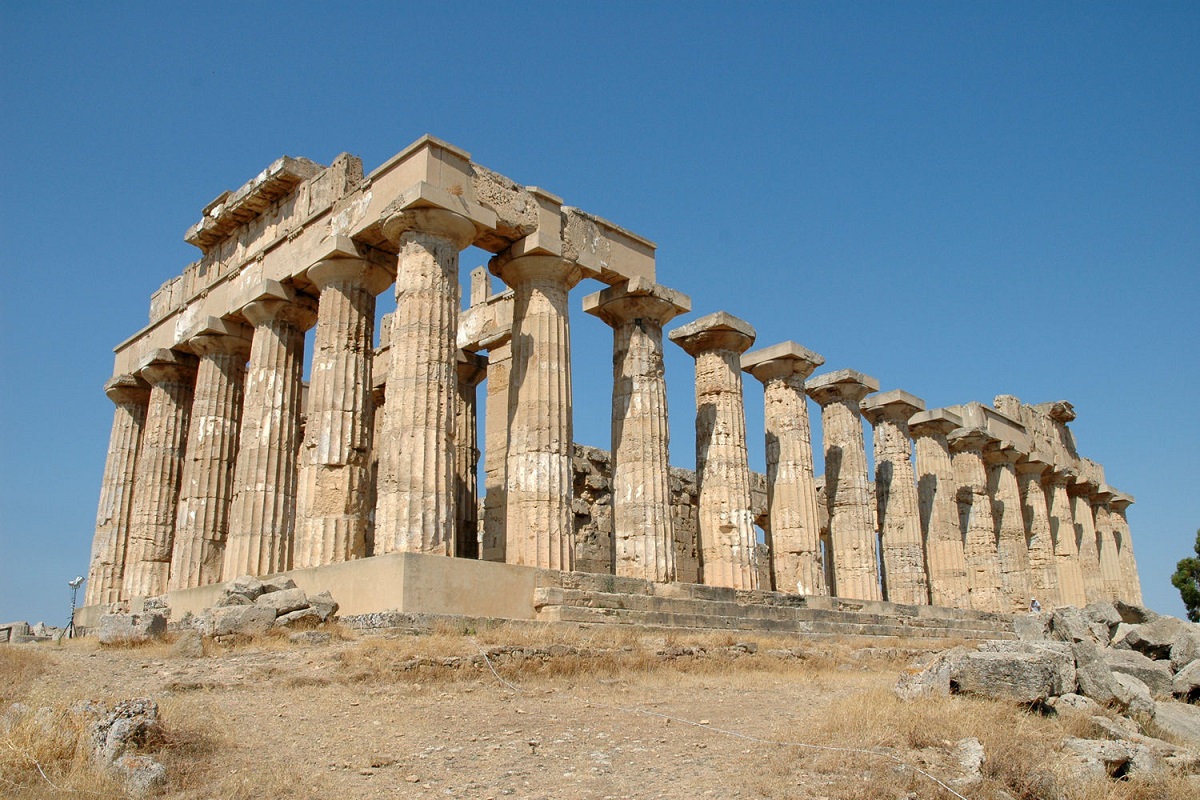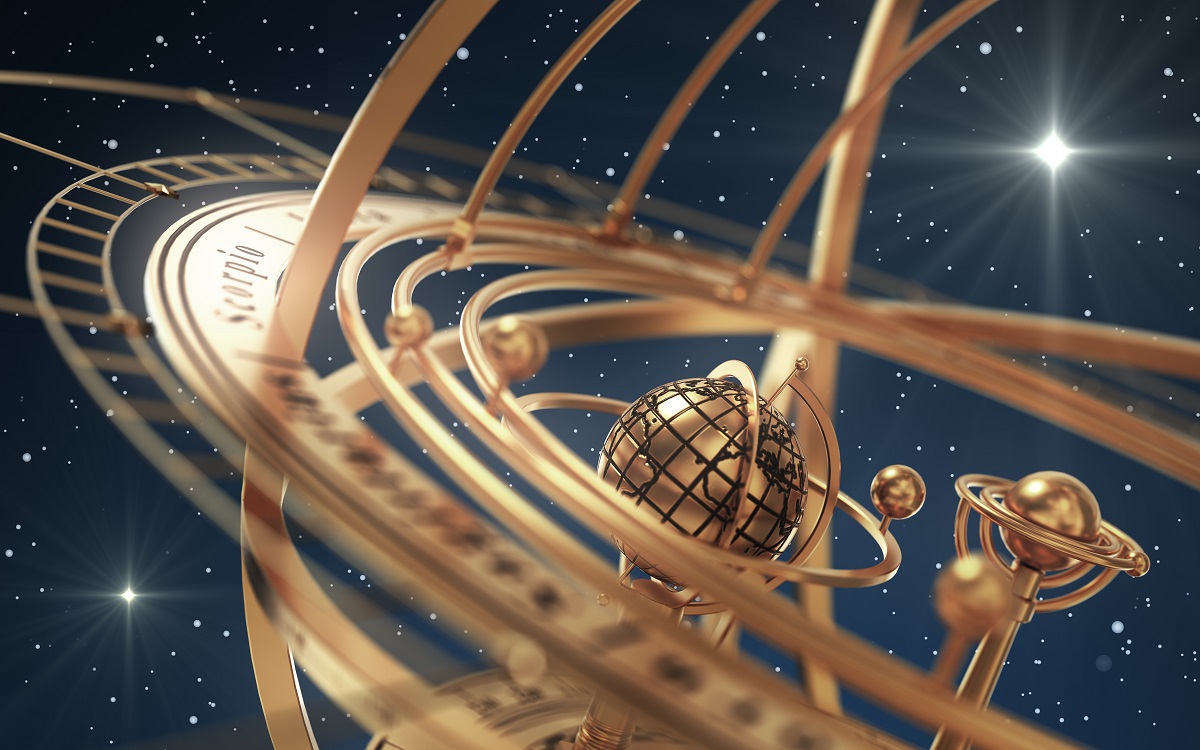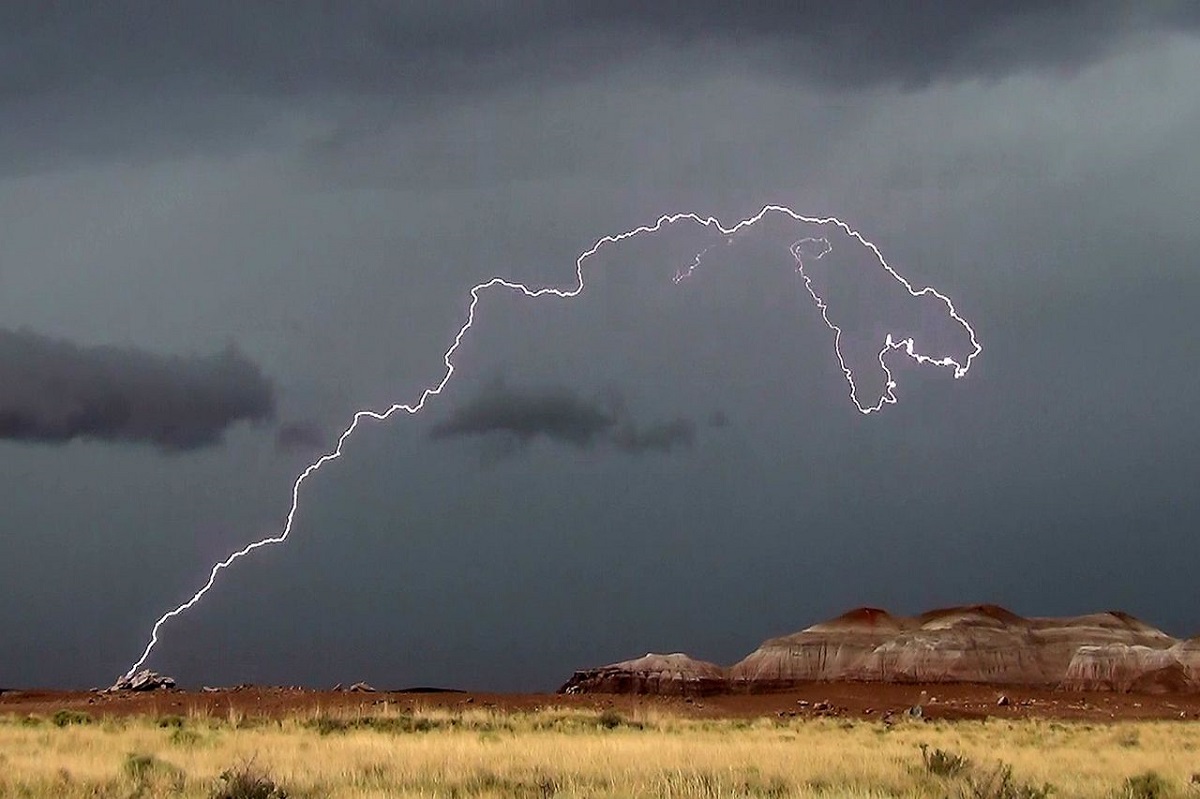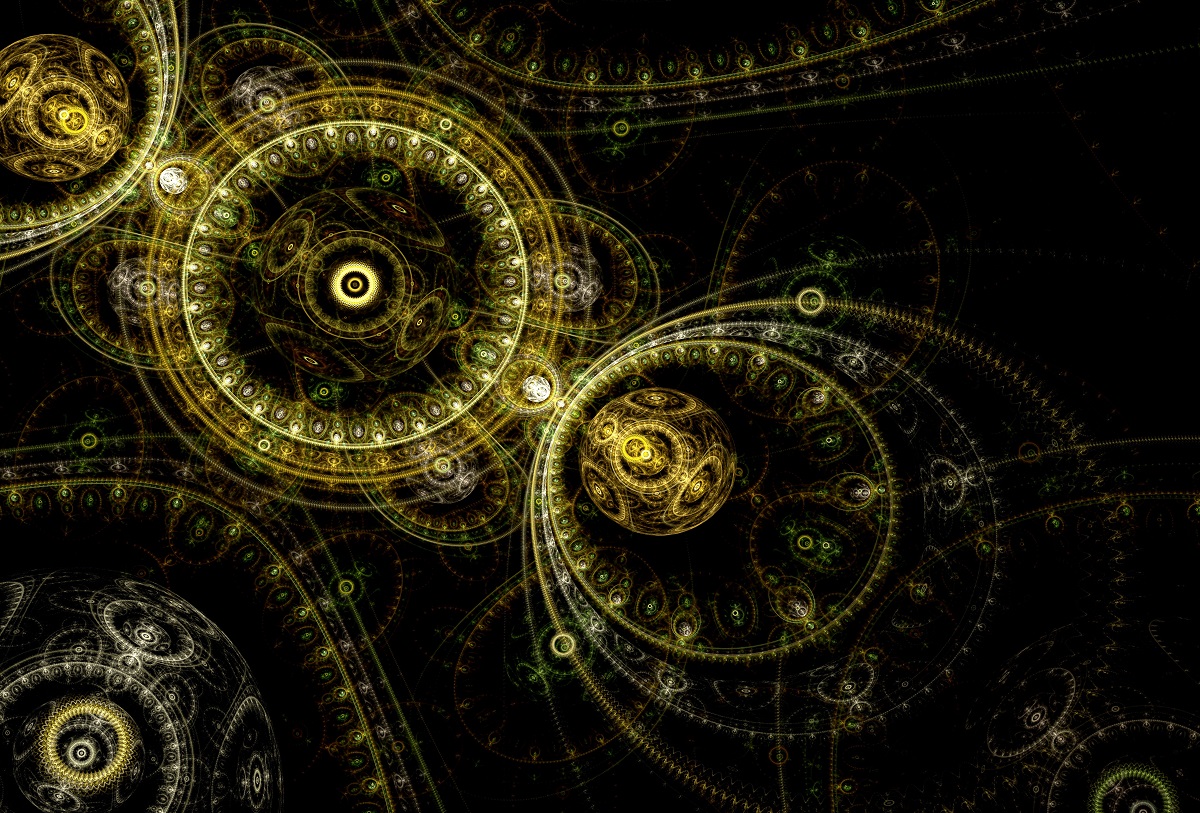The other day, I watched a science-fiction film directed by Denis Villeneuve, shot in Montreal and near Rimouski, called Arrival. The most interesting idea in this film is that a person (the character Louise Banks, played by Amy Adams) can experience in a flash, as something real, a moment that is yet-to-come, and is still situated in the future. She discovers this while decoding the language and culture of heptapods, extraterrestrial creatures who have come to visit Earth and who do not have the same idea of time as humans do.
We have all experienced flashbacks. What about flash-forwards? Is this really something new? Actually, I can think of several different models of time, going back to the dawn of recorded history.
In one of my WildTrekker podcasts, The Arrow of Time I, I explore what I call the retrogressive, circular, flux, Nemesis, arrow and cyclical models of time.
https://www.evidentia.net/2019/10/30/the-arrow-of-time-1/

First, the retrogressive model of time. Sumer, the earliest known civilization, left no trace of myths pertaining to the future. The Sumerians took a pessimistic view of man and his future. They felt nostalgia for the secure old world they had known and whose traces were everywhere to be seen around them; they wanted to live a life free of fear, poverty and war. But whereas they believed that long ago men had lived in a state of happiness, they could not believe in a better future. They considered it was impossible to see beyond the present into the future, since only the gods themselves could ever contemplate destiny. Time thus ended abruptly in the present.
A similarly pessimistic view was held by the Egyptians, for whom the heroic achievements of the past were everywhere in evidence, but the future was a time of narrowing possibilities.
In the 8th century BC, the Greek poet Hesiod wrote Works and Days. Here we find expressed the powerful myth of the Golden Age, according to which five races have appeared on the face of the Earth. With this poem, Hesiod seeks to change the ways of his mean-spirited and selfish brother, by conjuring up the image of a happier society where justice was its own reward. The myth of the Golden Age is retrogressive – it moves from better to worse – it symbolizes the gradual decay and fall of man from his godlike status in the beginning, and thus resembles the retrogressive view of time developed by other ancient peoples.
The five races are as follows: first the Golden Race lived like the gods and felt no sorrow, did not toil, but rather feasted gaily all the day long; the greatly decayed Silver Race followed, whose idleness, sin and folly earned the scorn of the gods; then came the Bronze Race, lovers of battle and horror; a fourth race of demigods, righteous and heroic, followed; and Hesiod’s own Fifth Race: “Dark is their plight. Till and sorrow by day are theirs, and by night the anguish of death; and the gods afflict them and kill… And Zeus will smash them in turn on his chosen day…”
Eight centuries after Hesiod, or twenty centuries before our own time, the Latin poet Ovid gave a similar account of the creation of the world in the epic poem Metamorphoses. Like Hesiod, Ovid had difficult personal circumstances: he had committed some deeply offensive act during the reign of the emperor Augustus, and was then sent into exile on the Black Sea, where he completed Metamorphoses. “In the beginning was the Golden Age,” writes Ovid, “when men of their own accord, without threat of punishment, without laws, maintained good faith and did what was right. There were no penalties to be afraid of, no bronze tablets were erected, carrying threats of legal action, no crowd of wrong-doers, anxious for mercy, trembled before the face of their judge; indeed, there were no judges, men lived securely without them…. But last of all arose the age of hard iron: immediately, in this period which took its name from a baser ore, all manner of crime broke out; modesty, truth and loyalty fled. Treachery and trickery took their place, deceit and violence and criminal greed.” The myth of the Golden Age still had a large following during the Renaissance of the 15th and 16th centuries. The myth of the Golden Age reappeared in the 19th century, but by some quirk of the imagination the time sequence was “reversed” and millenarian writers placed the Golden Age not in the past but in the future instead.

Another example of the retrogressive time model is provided by the myth of Atlantis, which Plato developed in the Timaeus and the Critias. Plato here writes of an ideal commonwealth, the island of Atlantis, situated 9,000 years before the birth of Solon: Poseidon wisely inaugurates peace, prosperity and a spirit of sharing on the island; under his benevolent reign the Atlantean people enjoy considerable wealth, because of mines located on their island as well as regular sea-borne commerce; they have an abundance of wood, elephants, race horses, pastures, grasses and fruit-bearing trees; they build a beautiful city of palaces and temples, golden statues, canals, aqueducts and every refinement known to man. But Plato develops this compelling vision of a long-lost wonderland from the perspective of the regressive view of time: the wonderland exists no longer. “By such reflections and the continuance in them of a divine nature, the qualities which we have described grew and increased among them; but when the divine portion began to fade away, and became diluted too often and too much with the mortal admixture, and the human nature got the upper hand, they then, being unable to bear their fortune, behaved unseemly.” After this, Zeus, the god of gods, perceived that an honourable race was in a woeful plight; and although the dialogue ends abruptly, we are left to understand that Zeus inflicted severe punishment on the Atlanteans; other traditions maintain that the fabled city of 9,000 years beforehand was engulfed by the sea.

Next, the circular model of time. We now come to the Greek philosopher Aristotle’s idea of the eternal universe.
In the 4th century BC, Aristotle is opposed to Plato’s view that there is a beginning of all things, a moment in time when Creation takes place. No! Time cannot have a starting-point, the way Plato theorized. On the contrary, the universe is eternal. And while the universe is subject to periods of change, that change comes around full circle once every thousand years, when the Sun, Moon and planets return to the same positions they were in one thousand years beforehand. As a result, future events are not just located in the future; nor are past events just located in the past. Events are both in the future and the past, since they are located on the outer edge of a giant cosmic wheel.
Aristotle wonders whether the Trojan War, which happened in the 12th century BC, six centuries before his time – well, did the Trojan War actually occurred before Aristotle’s time. “Are we to take it that the generation of the Trojan War is prior to ours,” Aristotle asks, “and that their predecessors are prior to them, and that those who are previous are prior ad infinitum? Or, if the Universe has a beginning and a middle and an end, and if, when anybody is brought by old age to the terminus, he comes right back again to the starting-point, then what stands in the way of our being nearer to the starting-point than the generations of the Trojan War were? … Well, if human history is a circle, and if a circle has no starting-point and no terminus, it follows that the priority which consists in being nearer to the starting-point cannot be possessed either by us over the generation of the Trojan War or by that generation over us.”
Well, what do you think of the idea of life being on a giant cosmic wheel? Once the wheel comes full circle, everything experienced one thousand years ago will be re-enacted exactly as it was, a second time. And then, a thousand years from now, it will be re-enacted again. And so on, and so forth. I am not sure I would want to be around in 1000 years, and have to relive the same experiences I have already had! Perhaps Aristotle means that someone else exactly resembling us would be around to relive those same experiences, which means they would not be free to go off script… Aristotle’s theory goes to show how complex the idea of time really is.
Aristotle’s circular view of history downgrades the unique character of events, since they were inevitably bound to recur every thousand years, in a repetitive pattern on the analogy of the circular movement of celestial bodies.

Another model from classical Antiquity is the flux model of time. In the 6th and 5th centuries BC, the Greek philosopher Heraclitus addresses continuous change in the universe. Only fragments of Heraclitus survive to this day. What we know of his writings are mostly fragments paraphrased by Plato. According to these fragments, “All entities move and nothing remains still … We both step and do not step in the same rivers. We are and are not …” In these cryptic fragments, Heraclitus compares time to the ceaseless movement of a river. If we consider those rivers to be a reality outside of ourselves, then that reality is continually changing. And in saying “we are and are not”, he indicates that our internal reality is never the same either, from one moment to the next. Not that time moves downhill, the way rivers flow towards the sea. Heraclitus actually uses the river metaphor to show how “Everything changes and nothing remains still … You cannot step twice into the same stream …” Well, I live next to the St. Lawrence River. If I form a picture in my mind of that river, whose streamflow changes from one day to the next, and from one season to the next, I wonder whether the flux time model could include waves of time, currents, floods and even drought. Heraclitus after all lived in Asia Minor – or what is now Turkey – a place known for its hot, dry summers and cool, wet winters.

For the ancient Greeks, events are divinely ordained. Events occur by the will of the gods. One goddess in particular, the dark-faced winged goddess Nemesis, upholds justice by striking a balance between good fortune and the worth of the person enjoying that good fortune. She cannot tolerate that evil or criminal or arrogant or insolent people go “too far” – that they glory in all the wealth and power and social position they have hoarded. So, Nemesis strikes them down, like a thunderclap: she enacts retribution to bring about their fall – from the crest of the wave of good fortune to the trough of bad fortune. According to the Nemesis model of time, there is something fatalistic about events over time, which are out of human control, and are determined by the gods. Which means – we had better watch out! (See the tornado image at the top of this blog.)
What do you think of these different models of time from Antiquity? Do any experiences in your life support the idea that time is retrogressive, or moving backwards? Do you find Aristotle’s idea of circular time appealing, as if events were on a giant cosmic wheel making a complete turn every 1000 years? Or do you like the way Heraclitus uses the metaphor of the river to suggest that everything is in a state of flux? Perhaps you have seen bad people get their just deserts, as if the goddess Nemesis had finally knocked them off the crest of the wave of good fortune, to make them tumble down into the trough of bad fortune.
The Jews of the Bible are a people focused on the future. Set against the backdrop of other models of time in the ancient world, such as the retrogressive, circular, flux and Nemesis models, it is clear the Hebrew Bible takes a very original approach to time, which is now moving forward from a unique past through a unique present to a unique culminating point in the future. The Bible is the first work presenting us with the arrow model of time. Moreover, this “arrow” of time flies within the framework of a cosmic beginning and ending of time, an opening and closing of the phrase of life on Earth. I consider this to be the Biblical paradigm, which is first of all a Jewish intuition.

Everywhere in the Bible, the human impulse to want to know the future is acknowledged. One has only to think of the Psalmist, who pleads: “Lord, let me know my end, and what is the measure of my days; let me know how fleeting my life is! Behold, thou hast made my days a few handbreadths, and my lifetime is as nothing in thy sight. Surely every man stands as a mere breath! Surely man goes about as a shadow! Surely for nought are they in turmoil; man heaps up, and knows not who will gather! And now, Lord, for what do I wait? My hope is in thee.”
In the Bible there are many different attempts to unlock the secrets of time and thus to model the future.
Well, premonitory dreams can contain genuine communications from God about the future, the Bible tells us, but some dreams are false and some dreamers deceitful. The Bible depicts kings who want to foresee the outcome of future battles, but are often subject to the errors of magic, divination and sorcery, whereas true prophets would be able to foretell events for them. The problem is that godless soothsayers conjure up “illusory” imagined futures, whereas true God-fearing prophets are able intuitively to apprehend the “real” knowable future. Finally, events which radically interrupt the Biblical arrow of time – such as the Babylonian captivity when the Hebrews were cast out of their homeland and exiled to a far land – have the effect of challenging previous prophecies and frustrating expectations, thereby upsetting the human ordering of time. Frustrated expectations are often accompanied by impassioned end-of-the-world visions.
The Bible thus establishes the forward movement of time, within the framework of a cosmic beginning and ending. The Biblical model of time leaves no room for belief in the circular model or time, or the existence of multiple worlds.
A crucial element of Biblical time is the belief in the existence of a “future”, which acts as the culmination point of time moving forward from the past and the present. This is the arrow of time.
In the Biblical context, the future is not directly “knowable”; God alone determines in advance what will happen, and understands what He has done: God has preknowledge of each man from his conception onward. God has preknowledge of events.
If the future is not directly “knowable” by man, then it is at the very least accessible, in varying degrees, to the faithful, depending on the purity of their faith and the extent of their trust in God. Without faith and trust, there is simply no future whatever.
Ultimately, Biblical time is constructed around the future. The arrow of time serves as a focus for promise, hope, and deliverance from current suffering. The future is thus apprehended in a moral and allegorical way more than a literal way, and the prophet’s message itself is a fiercely moral message, which does not necessarily have a strict literal meaning.
Just as the Jewish Bible describes the beginnings of time in the Book of Genesis, so the Jewish prophets describe the end of time.
The early Christians saw the cosmic beginning and cosmic ending of time in much the same terms as the Jews, except that for Christians, Jesus Christ is the Messiah. After his First Coming – his birth in Bethlehem, some 2000 years ago, his 33-year-life in the Holy Land, and his death and resurrection in Jerusalem, Christ “will come again in glory to judge the living and the dead, and his kingdom will have no end.” Christians thus look for the resurrection of the dead, and the life of the world to come. For Christians, Biblical time is also constructed around the future. But the problem for some early Christians was knowing when the Messiah would return for the Second Coming. According to the New Testament, God has sealed a new covenant with the Christians, but this covenant is challenged, when the Thessalonians demand that St. Paul write to say when Christ will appear at the end of the world. And Paul’s reply is literally “timeless”: “But as to the times and the seasons, brethren, you have no need to have anything written to you. For you yourselves know that the day of the Lord will come like a thief in the night.” This sounds to me like ambivalence about the much-prophesied Last Things. Paul is not willing to commit himself to a particular date.

Then there is the cyclical model of time. According to the dictionary, a cycle is “a course or series of events or operations that recur regularly and usually lead back to the starting point.” Now, that may sound like Aristotle’s great cosmic wheel turning in the heavens. But actually, the cyclical time model depicts in the evolution of historical events and institutions a pattern from birth and growth to decay and death. It is an organic model. An early proponent of this cyclical time model is Polybius, a Greek historian of the 3rd and 2nd centuries BC, who detects a cyclical pattern in the organization of each political state. Well, he says, the state starts off as a primitive monarchy, then develops into a hereditary kingship, then the state declines into tyranny as a single, all-powerful ruler seizes control; in opposition to this tyranny, the state then witnesses the emergence of a competing aristocracy of leading families, who morph into an oligarchy of rich, powerful people who jealously hoard power for their own benefit; the oligarchy is replaced by a democracy, or the rule of the people, which eventually collapses into mob rule.
The fact that Polybius sees the development of institutions and the organization of political states in cyclical terms, means that some people use the Polybius cyclical time model to forecast the decay and degeneration of individual states. I may come back to the cyclical model of time in another series of podcasts, a few months from now, because many key thinkers from Ibn Khaldun in Tunisia to Vico in Italy, and Hegel to Marx in Germany, develop this time model further.


